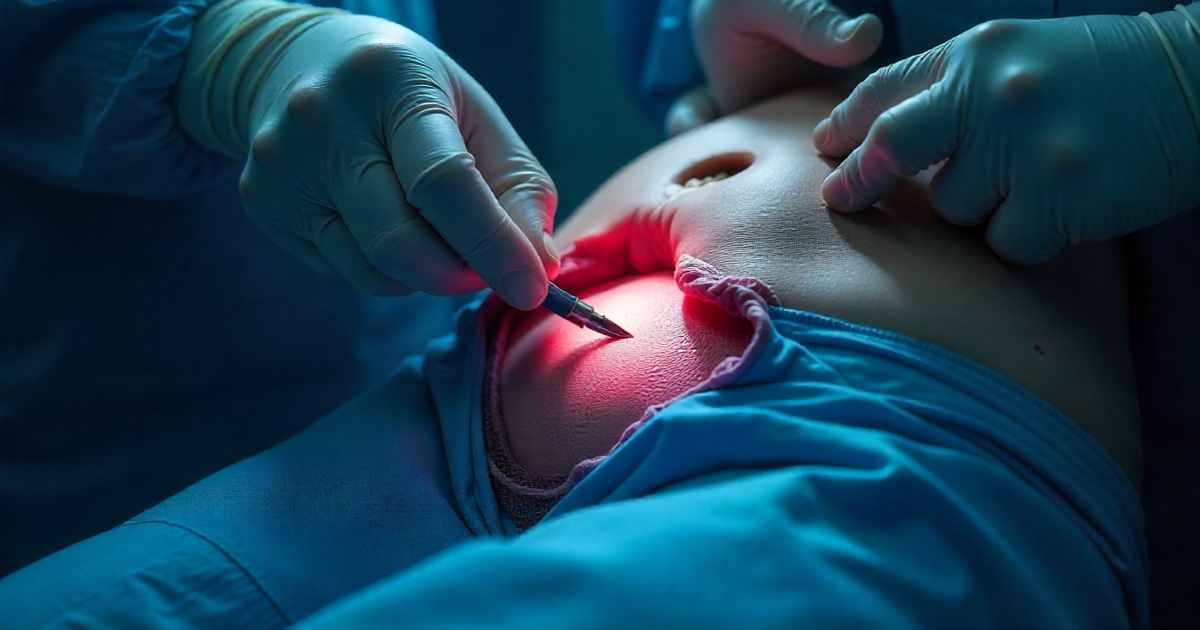What Is Laparoscopic Surgery?
Laparoscopic surgery is a minimally invasive surgical technique performed under general anesthesia, without making large incisions in the abdominal area. A small incision (approximately 1 cm) is made through the belly button, and the abdominal cavity is inflated with a special gas. A laparoscope — an optical device with a camera and light — is then inserted, and the surgical area is visualized on a monitor. Surgical instruments are introduced through additional small incisions in the lower abdomen and groin. Compared to traditional open surgery, this method offers many benefits, including faster recovery, less pain, and a reduced risk of infection.
Today, laparoscopy is not only used for procedures like ovarian cyst removal, adhesion release, or infertility evaluation, but also for more advanced surgeries such as hysterectomy, myomectomy, and early-stage ovarian cancer operations. It is particularly advantageous for women with obesity or diabetes, as wound healing is generally easier compared to open surgery.
Common Indications for Laparoscopic Surgery
Myomectomy involves removing benign tumors (fibroids) from the uterus using a minimally invasive approach. Fibroids rarely turn cancerous and can be removed regardless of their size or number. Submucosal fibroids, located close to the uterine lining, can be safely and effectively removed via laparoscopy, resulting in less pain and quicker recovery.
Ovarian cyst removal is used when cysts do not respond to medication. In conditions like endometriosis (where uterine tissue attaches to the ovary) or dermoid cysts (which may contain tissue like hair or fat), laparoscopy is preferred. This allows healthy ovarian tissue to be preserved while avoiding damage to nearby structures.
Endometriomas, or “chocolate cysts,” are fluid-filled cysts commonly seen in endometriosis. These can be removed laparoscopically without harming the ovary.
Adnexal masses and abscesses, such as cystic structures or infections near the ovaries, can also be treated with laparoscopy, preventing the need for open surgery.
Laparoscopic hysterectomy is the complete removal of the uterus. It is often performed for heavy menstrual bleeding, multiple fibroids, uterine thickening, or early-stage uterine cancer. The minimally invasive approach shortens both recovery and hospital stay.
Salpingectomy is the removal of the fallopian tubes. It is used in cases such as ectopic pregnancy, hydrosalpinx (fluid-filled tubes), or pyosalpinx (pus-filled tubes). In IVF patients, removing fluid-filled tubes can improve pregnancy chances.
Tubal reanastomosis involves reopening previously tied tubes, typically done for women who wish to conceive again after surgical contraception.
Oophorectomy refers to the surgical removal of the ovaries, which may be necessary for large cysts, tumors, or severe infections.
Presacral neurectomy is performed to relieve chronic and treatment-resistant pelvic or groin pain by severing certain nerves.
Cervical and ovarian cancer surgeries can be performed laparoscopically in early-stage cases, allowing for precise and less invasive treatment.
Ectopic pregnancy surgery removes pregnancies that implant outside the uterus, usually in the fallopian tubes. This preserves the tube and helps stop internal bleeding.
Tubal ligation is a permanent method of birth control involving the surgical closure of the fallopian tubes.
Neosalpingostomy is a procedure to open the blocked end of the fallopian tubes to improve the chance of egg and sperm meeting naturally.
Ectopic Pregnancy Treatment
The choice of treatment for ectopic pregnancy depends on the patient’s clinical condition, lab results, and ultrasound findings. Early diagnosis is crucial.
Medical Observation
If the fallopian tubes are intact, there is no internal bleeding, and the patient is stable, close monitoring may be sufficient. Beta-hCG levels are typically under 1000 IU/L and decreasing. Ultrasound and hormone levels are followed daily or every other day.
Medical Treatment
Methotrexate injection is used when there is no fetal heartbeat, beta-hCG is not excessively high, and the ectopic mass is under 3–4 cm. Blood count, kidney, and liver function tests are done before treatment. This method has a high success rate, and many women can later conceive naturally.
Surgical Treatment
If internal bleeding develops or symptoms worsen, emergency surgery is required. Laparoscopy is the preferred method in recent years due to its lower blood loss, shorter hospital stay, and faster recovery. During laparoscopy, a salpingostomy is often performed to remove the pregnancy tissue while preserving the tube. If preservation is not possible, a salpingectomy is performed.

